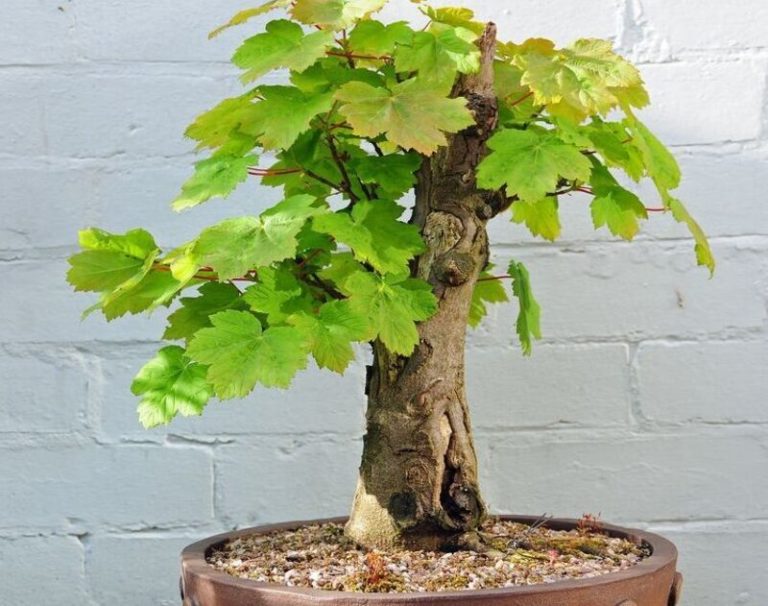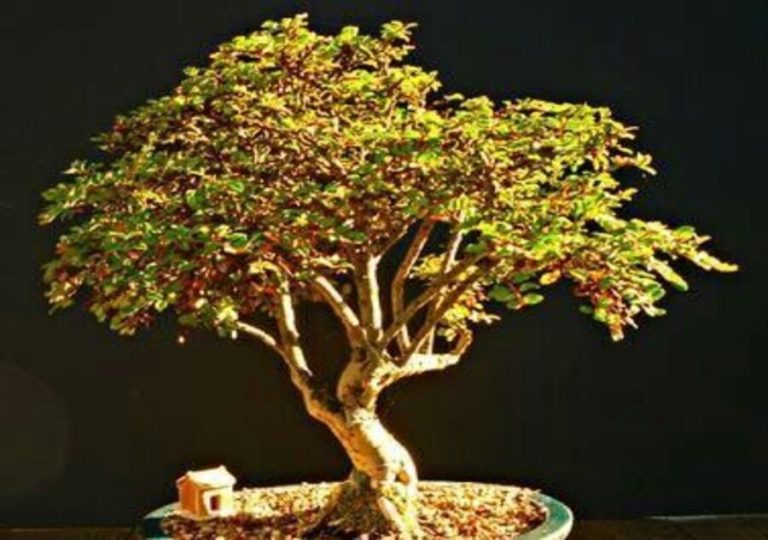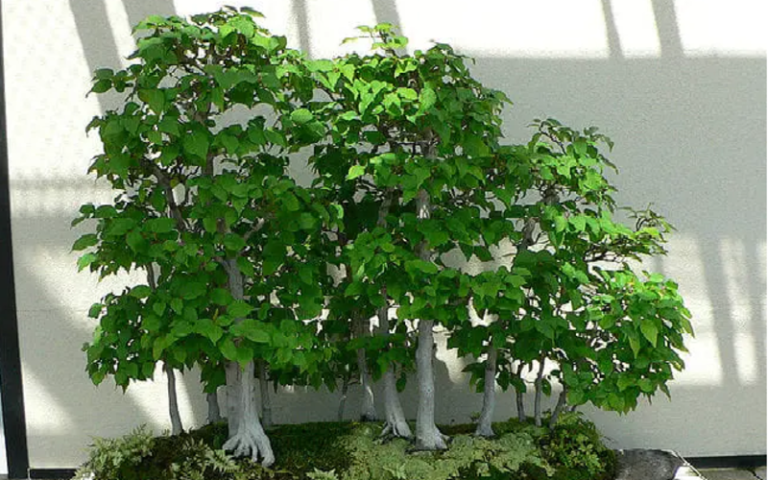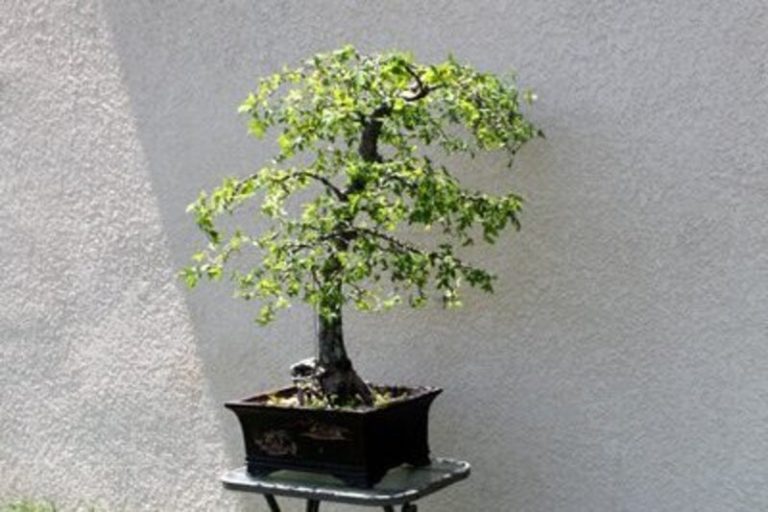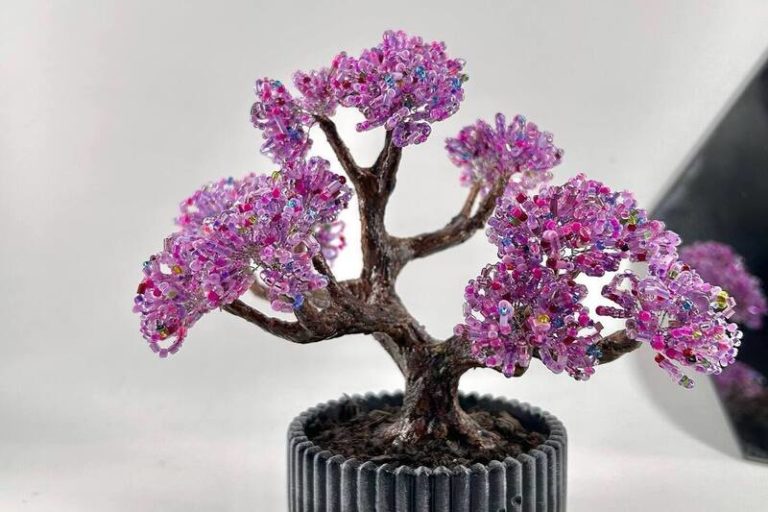Bonsai Tree Wire: The Essential Tool for Shaping Your Bonsai
Bonsai trees are small, potted trees that are grown and shaped using a combination of pruning and wiring techniques. The use of bonsai tree wire is a crucial part of maintaining these miniature trees. In this article, we will discuss the basics of bonsai tree wire, including what it is, how to use it, and its benefits.
What is Bonsai Tree Wire?
Bonsai tree wire is a thin, bendable wire that is used to shape a bonsai tree’s branches and trunk. It is usually made of copper, aluminum, or steel that has been heated and cooled, and it comes in different sizes. The wire is wrapped around the tree’s branches and base, so they can be bent and shaped in any way that is needed. It is one of the most important tools for keeping a bonsai tree looking good and keeping it healthy.
Types of Bonsai Tree Wire
There are different kinds of wire for bonsai trees, and each has its own pros and cons. Most bonsai plants use one of the following types of wire:
1. Copper wire: This type of bonsai wire is the most famous because it is easy to bend and shape. It is also strong enough to hold the branches in place but bendable enough not to hurt the tree. Copper wire comes in different widths so that it can be used on branches of different sizes.
2. Aluminum wire: This type of wire is lightweight and easy to work with. It is less expensive than copper wire and comes in a range of colors, which can be useful for identifying the different branches that have been wired. However, aluminum wire is not as strong as copper wire and may need to be replaced more frequently.
3. Annealed steel wire: This is the strongest bonsai wire and is best suited for larger, more established plants. Although annealed steel wire is not as flexible as copper or aluminum wire, it is strong enough to keep the branches in place for an extended period of time. It also has a lower chance of leaving wire markings on the tree.
The proper type of wire should be chosen depending on the size, age, and intended shape and style of the tree because each type of wire has advantages and disadvantages of its own.
How Does a Bonsai Tree Wire Work?
Bonsai tree wire works by gently bending and shaping the tree’s branches and trunk into the desired position. To keep the wire in place, it is wrapped around the branch or trunk and tightened.
As the branch or trunk continues to grow, the wire will gradually cut into the bark, signaling the tree to thicken and strengthen the area just below the wire.
This process creates a more natural-looking curve in the branch or trunk and helps to create a more aesthetically pleasing bonsai tree.
Once the branch or trunk has set in the desired position, the wire should be removed to avoid damage to the tree.
Leaving the wire in place for too long can cause it to cut into the foliage and restrict the flow of water and nutrients, resulting in severe harm to the tree or even its demise.
The wire should be carefully removed using wire cutters and unwound from the tree. If any wire marks are left on the tree, they can be gently sanded down to avoid scarring.
Benefits of Using a Bonsai Tree Wire
Using bonsai tree wire offers several benefits, including:
Shape control: The wire allows you to shape and guide the growth of the branches and trunk of the bonsai tree. This allows you to create a more aesthetically pleasing shape and style for the tree.
Aesthetic appeal: A well-shaped bonsai tree looks nice and can bring a sense of beauty and calm to any room.
Health benefits: Properly shaping and pruning a bonsai tree can help improve its health and longevity. The wire allows you to control the direction of growth and prevent overcrowding of branches, which can promote healthy growth.
Artistic expression: Shaping and styling a bonsai tree using wire is a form of artistic expression that can be both meditative and rewarding.
Overall, bonsai tree wire is a vital tool for keeping a bonsai tree’s beauty and health. It allows you to mold and direct the tree’s development while also encouraging healthy growth and giving aesthetic appeal to any place.
How to Choose a Bonsai Tree Wire
It is critical to select the proper bonsai tree wire to ensure the success of your bonsai tree. Here are some pointers to consider when selecting wire for your bonsai tree:
- Thickness: Select a wire thickness appropriate for the size of the branch or trunk to be wired. A wire that is too thick may cause harm to the tree, but a wire that is too thin may not keep the branch in place.
- Material: Because of its flexibility and strength, copper wire is the most widely used wire for bonsai plants. Aluminum wire is a less priced but less robust option. Annealed steel wire is the strongest alternative, but it is also the least flexible.
- Length: Make sure to choose a wire length that is long enough to wrap around the branch or trunk multiple times.
- Color: Some wires come in different colors, which can be helpful in identifying which branches have been wired.
- Quality: Choose a high-quality wire that is strong and durable. Cheaper wires may break or damage the tree.
- Purpose: Different wires may be used for different purposes, such as shaping or holding branches in place. Consider the purpose of the wire before making a purchase.
Overall, it is important to choose a bonsai tree wire that is appropriate for the size and age of your tree, as well as the desired shape and style. A good quality wire that is strong and flexible will help to create a healthy and aesthetically pleasing bonsai tree.
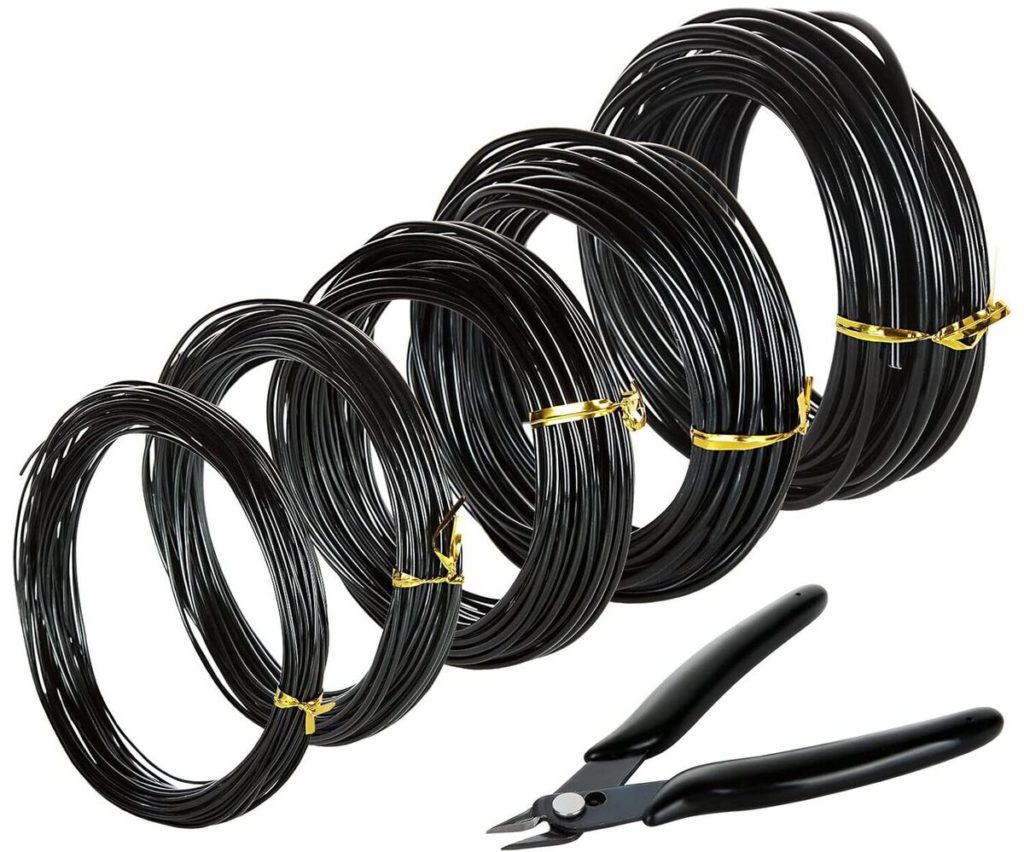
How to Use Bonsai Tree Wire
Using bonsai tree wire takes some time and talent, but it can be a highly effective technique for shaping and styling your bonsai tree with experience. Here are the fundamentals of using bonsai tree wire:
Choose the right wire: Select a wire that is appropriate for the size and strength of the branch you want to shape. Copper wire is the most common wire used for bonsai trees due to its strength and flexibility.
Wrap the wire around the branch: Begin at the branch’s base and wrap the wire in a spiral pattern along its length. Make sure the wire is tight enough to hold the branch in place without damaging the bark.
Shape the branch: Gently bend the branch in the desired direction. Take care not to overbend the branch, as this can cause it to snap.
Repeat for other branches: Continue to wrap and shape the other branches as needed. Be patient and take your time to achieve the desired shape.
Remove the wire: Once the branch has set in its new position, remove the wire by carefully unwinding it from the tree. Avoid pulling the wire off, as this can damage the bark. Use wire cutters to snip the wire at the ends and gently unwind the wire from the tree.
Check for wire marks: If there are any wire marks on the tree, use sandpaper to gently sand them down to avoid scarring.
Using bonsai tree wire takes some effort and patience, but it can be a highly efficient technique for shaping and designing your bonsai tree. Always take care not to harm the tree and remember to remove the wire before it cuts into the bark. With effort and care, you can grow a beautiful and healthy bonsai tree.
Common Mistakes to Avoid When Using Bonsai Tree Wire
Using bonsai tree wire is a delicate operation, and there are numerous common mistakes to avoid in order to keep your bonsai tree healthy and beautiful:
Using wire that is either too thick or too thin can be detrimental to the tree, while inadequately thick or thin wire may fail to support the branch.
Using wire that is too tight: Using wire that is too tight might cause harm to the tree’s bark.
Leaving the wire on for too long: Leaving the wire on for too long can cause irreparable harm to the tree by cutting into its bark.
Wiring during periods of growth: Wiring the tree during periods of growth can cause damage to the tree, as the branches are more pliable and can be easily damaged by the wire.
Using wire on weak or damaged branches: Using wire on weak or damaged branches can cause further damage to the tree.
Improperly removing the wire: Improperly removing the wire can damage the bark of the tree and leave scars.
To avoid these common errors, it is essential to select the correct size and strength of wire and to only use wire on healthy branches that can withstand the wire’s pressure. It is also essential to remove the wire at the proper time and with care so as not to damage the foliage. Bonsai tree wire can be a valuable instrument for shaping and sustaining the beauty of your bonsai tree if handled with care.
How to Care for and Maintain Bonsai Tree Wire
It is essential to care for and maintain bonsai tree wire to ensure the health and attractiveness of your bonsai tree. Here are some care and maintenance guidelines for bonsai tree wire:
- Regularly check the wire: Check the wire regularly to make sure it is not cutting into the bark or damaging the tree. Remove any wire that is too tight or has started to cut into the bark.
- Remove the wire at the right time: It is crucial to remove the wire at the appropriate moment to prevent the wire from slicing into the bark. Depending on the size and strength of the branch, wire should typically be removed after six to twelve months.
- Be gentle when removing the wire: When removing the wire, use wire cutters to snip the wire at the ends and gently unwind the wire from the tree. Avoid pulling the wire off, as this can damage the bark.
- Check for wire marks: After removing the wire, check for any wire marks on the tree. Use sandpaper to gently sand them down to avoid scarring.
- Keep the tree healthy: A thriving bonsai tree is less susceptible to wire damage. Maintain the tree’s health by regularly hydrating it, providing it with adequate sunlight, and fertilizing it as required.
- Avoid wiring during periods of growth: Avoid wiring the tree during periods of growth, as the branches are more pliable and can be easily damaged by the wire.
Overall, caring for and maintaining bonsai tree wire requires careful attention and patience. Regularly checking the wire, removing it at the right time, and keeping the tree healthy are all important steps to maintaining the beauty and health of your bonsai tree.
Where to Buy Bonsai Tree Wire?
Bonsai tree wire can be purchased at a variety of places, including specialty bonsai stores, garden centers, or online retailers. Some common places to buy bonsai tree wire include:
Bonsai nurseries: Numerous bonsai nurseries provide an extensive selection of bonsai tree wire and other bonsai tools and supplies.
Garden centers: Garden centers may also carry bonsai tree wire as well as other gardening supplies.
Online retailers: Online retailers such as Amazon, Bonsai Outlet, and Bonsai Boy offer a wide variety of bonsai tree wire and other bonsai tools and supplies.
When purchasing wire for bonsai trees, it is essential to select the correct size and strength of wire for the branches you intend to shape. To ensure that the wire will not harm your tree, it is also vital to choose a reputable brand of high-quality wire.
Conclusion
Wire for bonsai trees is essential for sustaining a healthy and aesthetically appealing bonsai tree. It enables the tree to be shaped and tailored in a variety of ways, but it must be used properly to avoid harming the tree. Bonsai trees wired with bonsai tree wire can flourish for many years with proper care and upkeep.
FAQ:
Q: What is Bonsai Tree Wire?
A: Bonsai tree wire is a tool used to shape and train bonsai trees by wrapping wire around the branches and trunk to bend and position them into the desired shape.
Q: What are the types of Bonsai Tree Wire?
A: The most common types of bonsai tree wire are copper and aluminum wire.
Q: How does Bonsai Tree Wire work?
A: Bonsai tree wire works by wrapping it around the branches and trunk of a bonsai tree and bending it into the desired shape. The wire holds the branches in place until they reach the desired position.
Q: What are the benefits of using Bonsai Tree Wire?
A: Using bonsai tree wire enables you to train and shape your bonsai tree into a more aesthetically appealing form. It also enables you to enhance the tree’s health by encouraging healthy growth and development.
Q: How do you choose Bonsai Tree Wire?
A: When selecting bonsai tree wire, it is essential to consider the required size and strength of the wire for the trained branches, as well as the wire’s material and brand.
Q: How do you use Bonsai Tree Wire?
A: To use bonsai tree wire, wrap it around the branch or trunk to be trained and bend it into the desired position. Be careful not to wrap the wire too tightly or leave it on for too long.
Q: How do you care for and maintain Bonsai Tree Wire?
A: To care for bonsai tree wire, store it in a dry place to prevent rust and corrosion. After use, remove the wire gently to avoid damaging the tree.
Q: Where can you buy Bonsai Tree Wire?
A: Bonsai tree wire can be purchased at specialty bonsai stores, garden centers, or online retailers.
Also Read:


